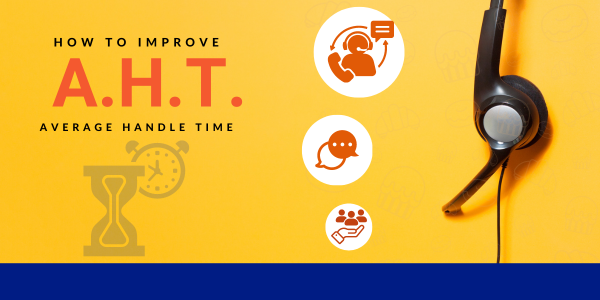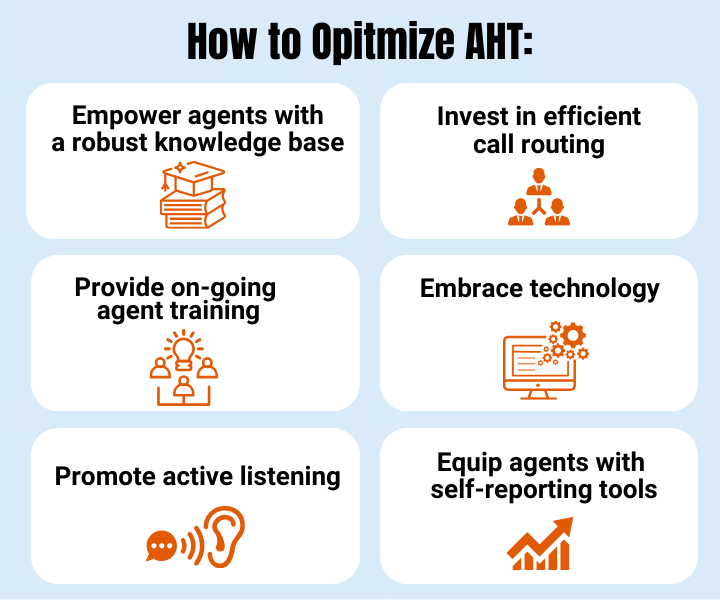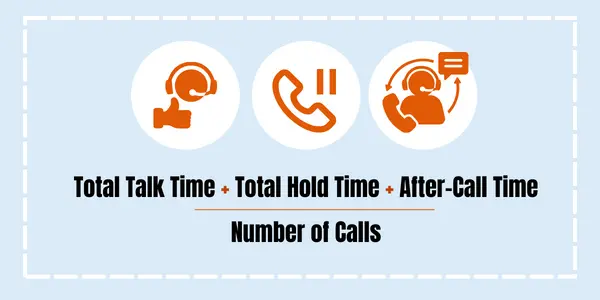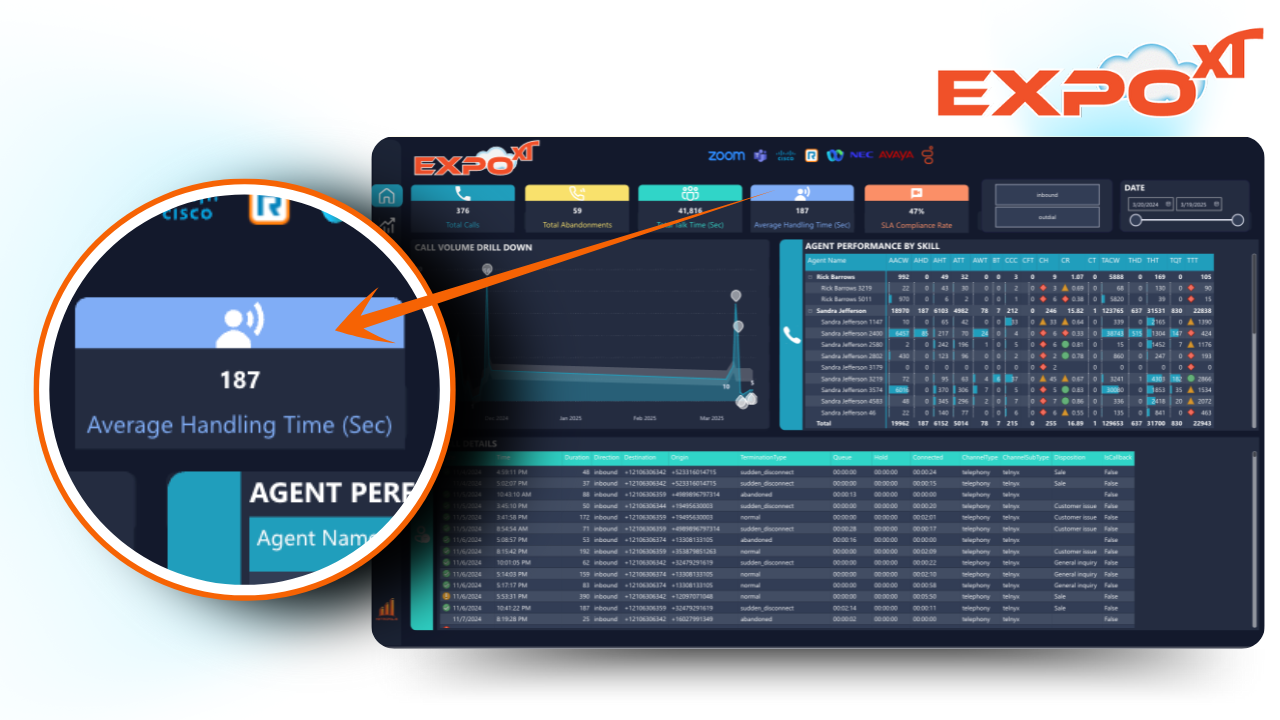


Are your call center costs spiraling? Is customer satisfaction dipping despite your team's best efforts? The culprit might be a single, often misunderstood metric: your Average Handle Time (AHT). While a low AHT can signify efficiency, chasing speed at all costs can damage customer relationships. The real goal is effective, timely resolution.
This ultimate guide will show you how to master this critical KPI. We'll break down the formula, provide industry benchmarks, and give you an actionable plan to reduce AHT the right way—improving both your operational efficiency and your customer experience.

Average Handle Time (AHT) is a core call center metric that measures the average duration of a single customer interaction, from the moment an agent accepts the call until they complete all post-call work (wrap-up). It includes not just talk time, but also any hold time and after-call work.
Mastering AHT is a delicate balancing act. It's not just about being faster; it's about being more effective. A well-managed AHT directly impacts:
Operational Efficiency: Lower AHT means agents can handle more inquiries, maximizing staffing resources and reducing cost-per-call.
Customer Satisfaction (CSAT): Customers value quick, efficient resolutions. Long hold times and drawn-out conversations lead to frustration and lower CSAT scores.
Agent Productivity & Morale: When agents have the right tools and processes to resolve issues efficiently, their job satisfaction improves. High AHT is often a symptom of agent frustration from inefficient systems or knowledge gaps.
The biggest mistake managers make is focusing solely on reducing AHT. This can lead agents to rush customers off the phone, resulting in unresolved issues and repeat calls, which destroys your First Call Resolution (FCR) rate. The true goal is to reduce AHT by removing inefficiencies, not by cutting corners on service.
Calculating AHT is straightforward. You simply add up the total time spent on talking, holding, and wrapping up calls, and then divide it by the total number of calls handled.

AHT = (Total Talk Time + Total Hold Time + Total Wrap-Up Time) / Total Number of Calls
Let's break down each component:
Total Talk Time: The cumulative time agents spend talking to customers.
Total Hold Time: The total time customers spend on hold during the interaction.
Total Wrap-Up Time (After-Call Work): The time spent after the call ends on tasks like logging notes in a CRM, sending follow-up emails, or processing an order.
Worked Example:
In one hour, an agent handles 10 calls with the following totals:
Talk Time: 35 minutes
Hold Time: 5 minutes
Wrap-Up Time: 10 minutes
Calculation: (35 + 5 + 10) / 10 calls = 50 minutes / 10 calls = 5 minutes (or 300 seconds) AHT.
While you can calculate this manually, modern call reporting software automates this process in real-time, providing instant insights without the need for spreadsheets.
The most common question we hear is, "What should my AHT be?" The answer is: it depends. A "good" AHT varies significantly based on your industry, the complexity of your calls, and your department's function.
According to global data from Call Centre Helper magazine, the industry average AHT is 6 minutes and 3 seconds. However, use this only as a general guide. A technical support call for a complex software issue will naturally have a much higher AHT than a simple retail order status check.
Here are some general industry benchmarks to help you gauge your performance:
| Industry / Department | Typical AHT Range |
|---|---|
| General Inquiries / Reception | 2-4 minutes |
| Retail & E-commerce | 4-6 minutes |
| Financial Services | 5-7 minutes |
| Healthcare | 5-8 minutes |
| Technical Support (Tier 1) | 7-10 minutes |
| Hospitality | 3-5 minutes |
The best benchmark is your own historical data. Track your AHT over time to identify trends and measure the impact of your improvement efforts.
Before you can fix a high AHT, you need to diagnose the cause. Most issues fall into one of three categories:
System & Technology Issues: Slow-loading CRM, clunky software, multiple disconnected systems that require agents to toggle between screens.
Process & Workflow Inefficiencies: Overly complex security verification, lack of clear escalation paths, or repetitive manual data entry.
Agent Knowledge Gaps: New agents who are unfamiliar with products, agents who can't find information quickly, or inconsistent training.
Improving AHT requires a strategic approach focused on removing roadblocks for your agents. Here is an actionable plan to get started.
The single biggest cause of hold time is an agent searching for an answer. An easily searchable, comprehensive knowledge base empowers agents to find information instantly, reducing their reliance on supervisors and dramatically cutting down on hold times.
Ensure your Interactive Voice Response (IVR) is routing customers to the correct department or agent skill group on the first try. Misdirected calls that require transfers add unnecessary time and frustration to the customer journey.
Call recording is not just for compliance; it's a powerful coaching tool. Listen to calls from agents with both high and low AHT. Identify what top performers are doing differently and use those insights to create targeted training for agents who are struggling.
Initial onboarding is not enough. Provide continuous training on new products, updated processes, and soft skills. Well-trained agents are more confident, more knowledgeable, and resolve issues faster.
If agents' wrap-up times are high, look for ways to streamline their post-call process. Use CRM integrations, pre-made templates for follow-up emails, and disposition codes to make logging calls faster and more consistent.
Create channels (like a Teams or Slack chat) where agents can quickly ask questions of peers or subject matter experts. A quick chat message is far more efficient than putting a customer on hold to find a supervisor.
Give agents visibility into their own performance with real-time dashboards. When agents can see their AHT, FCR, and CSAT scores, they are empowered to self-correct and take ownership of their improvement.
While process and training are crucial, the right technology acts as a force multiplier for all your AHT reduction efforts. A powerful call reporting and analytics platform like Metropolis does more than just calculate AHT—it gives you the deep visibility you need to diagnose and fix the root causes of inefficiency.

Here's how the right software helps:
Automated, Real-Time Tracking: Stop wasting time with spreadsheets. See your team's AHT and other critical KPIs on live dashboards.
Root Cause Analysis: Drill down into the data. Easily identify if high AHT is caused by talk time, hold time, or wrap-up time, and pinpoint which specific agents need coaching.
Identify Top Performers: See what your most efficient agents are doing right and replicate their success across the team.
Integrate with Your Systems: Connect with your PBX, UC platform (like Cisco, Avaya, or Webex), and Contact Center (Webex CC, Genesys, NICE CXone, etc) to get a complete picture of every interaction.
Ultimately, you can't improve what you can't effectively measure.
ATT only measures the time an agent spends talking to a customer. AHT is a more holistic metric that also includes hold time and after-call wrap-up time, giving a truer picture of the entire interaction duration.
Not necessarily. An extremely low AHT could be a red flag that agents are rushing customers or not fully resolving their issues, leading to repeat calls. The goal is to find the "sweet spot" of efficiency and quality, which is why AHT should always be analyzed alongside metrics like First Call Resolution (FCR) and Customer Satisfaction (CSAT).
For frontline managers and agents, AHT should be visible in real-time dashboards. For strategic planning, you should review AHT trends on a weekly and monthly basis to measure the impact of your improvement initiatives.